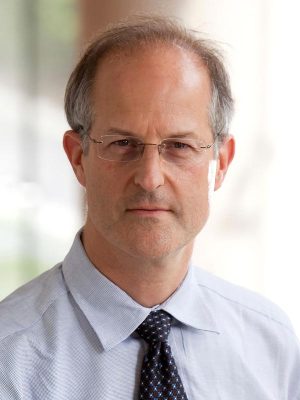Le tabagisme est, dans une large mesure, la principale cause du cancer du poumon, mais seule une minorité de fumeurs développe la maladie. Une étude dirigée par des scientifiques de l’Albert Einstein College of Medicine et publiée en ligne le 11 avril 2022 dans Nature Genetics suggère que certains fumeurs pourraient avoir des mécanismes robustes qui les protègent du cancer du poumon en limitant les mutations. Ces résultats pourraient aider à identifier les fumeurs qui courent un risque accru de contracter la maladie et qui méritent donc une surveillance particulièrement étroite.
“Cela peut s’avérer être un pas important vers la prévention et la détection précoce du risque de cancer du poumon, loin des efforts herculéens actuels nécessaires pour combattre la maladie à un stade avancé, où la majorité des dépenses de santé et de la misère se produisent”, a déclaré Simon Spivack, M.D., M.P.H., co-auteur principal de l’étude, professeur de médecine, d’épidémiologie et de santé de la population, et de génétique à Einstein, et pneumologue au Montefiore Health System.

Simon Spivack, M.D., M.P.H. Coauteur principal de l’étude. Crédit : Albert Einstein College of Medicine
Surmonter les obstacles pour étudier les mutations cellulaires
On suppose depuis longtemps que le tabagisme entraîne le cancer du poumon en déclenchant DNA mutations in normal lung cells. “But that could never be proven until our study, since there was no way to accurately quantify mutations in normal cells,” said Jan Vijg, Ph.D., a study co-senior author and professor and chair of genetics, professor of ophthalmology and visual sciences, and the Lola and Saul Kramer Chair in Molecular Genetics at Einstein (also at the Center for Single-Cell Omics, Jiaotong University School of Medicine in Shanghai, China). Dr. Vijg overcame that obstacle a few years ago by developing an improved method for sequencing the entire genomes of individual cells.
Single-cell whole-genome sequencing methods can introduce sequencing errors that are hard to distinguish from true mutations—a serious flaw when analyzing cells containing rare and random mutations. Dr. Vijg solved this problem by developing a new sequencing technique called single-cell multiple displacement amplification (SCMDA). As reported in Nature Methods in 2017, this method accounts for and reduces sequencing errors.
The Einstein researchers used SCMDA to compare the mutational landscape of normal lung epithelial cells (i.e., cells lining the lung) from two types of people: 14 never-smokers, ages 11 to 86; and 19 smokers, ages 44 to 81, who had smoked a maximum of 116 pack years. (One pack year of smoking equals 1 pack of cigarettes smoked per day for one year.) The cells were collected from patients who were undergoing bronchoscopy for diagnostic tests unrelated to cancer. “These lung cells survive for years, even decades, and thus can accumulate mutations with both age and smoking,” said Dr. Spivack. “Of all the lung’s cell types, these are among the most likely to become cancerous.”

Jan Vijg, Ph.D. Co-senior Author of the Study. Credit: Albert Einstein College of Medicine
Mutations Caused by Smoking
The researchers found that mutations (single-nucleotide variants and small insertions and deletions) accumulated in the lung cells of non-smokers as they age—and that significantly more mutations were found in the lung cells of the smokers. “This experimentally confirms that smoking increases lung cancer risk by increasing the frequency of mutations, as previously hypothesized,” said Dr. Spivack. “This is likely one reason why so few non-smokers get lung cancer, while 10% to 20% of lifelong smokers do.”
Another finding from the study: The number of cell mutations detected in lung cells increased in a straight line with the number of pack years of smoking—and, presumably, the risk for lung cancer increased as well. But interestingly, the rise in cell mutations halted after 23 pack years of exposure.
“The heaviest smokers did not have the highest mutation burden,” said Dr. Spivack. “Our data suggest that these individuals may have survived for so long in spite of their heavy smoking because they managed to suppress further mutation accumulation. This leveling off of mutations could stem from these people having very proficient systems for repairing DNA damage or detoxifying cigarette smoke.”
The finding has led to a new research direction. “We now wish to develop new assays that can measure someone’s capacity for DNA repair or detoxification, which could offer a new way to assess one’s risk for lung cancer,” said Dr. Vijg.
Reference: “Single-cell analysis of somatic mutations in human bronchial epithelial cells in relation to aging and smoking” by Zhenqiu Huang, Shixiang Sun, Moonsook Lee, Alexander Y. Maslov, Miao Shi, Spencer Waldman, Ava Marsh, Taha Siddiqui, Xiao Dong, Yakov Peter, Ali Sadoughi, Chirag Shah, Kenny Ye, Simon D. Spivack and Jan Vijg, 11 April 2022, Nature Genetics.
DOI: 10.1038/s41588-022-01035-w
The study is titled, “Single-cell analysis of somatic mutations in human bronchial epithelial cells in relation to aging and smoking.” Additional Einstein authors include: Zhenqiu Huang, Ph.D., Shixiang Sun, Ph.D., Moonsook Lee, M.S., Yakov Peter, Ph.D., Ali Sadoughi, M.D., Chirag Shah, M.D., and Kenny Ye, Ph.D., Miao Shi, Ph.D., Spencer Waldman, B.S., Ava Marsh, B.A., Taha Siddiqui, M.B.B.S., Alexander Y. Maslov, M.D., Ph.D. (also at Voronezh State University of Engineering Technology, Voronezh, Russia), and Xiao Dong, Ph.D. (also at University of Minnesota, Minneapolis MN).
This study was supported by grants from the National Institutes of Health (U01 ES029519-01, U01HL145560, AG017242, and AG056278).




